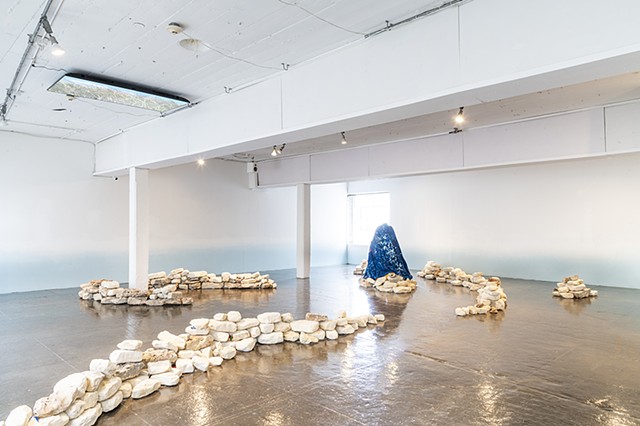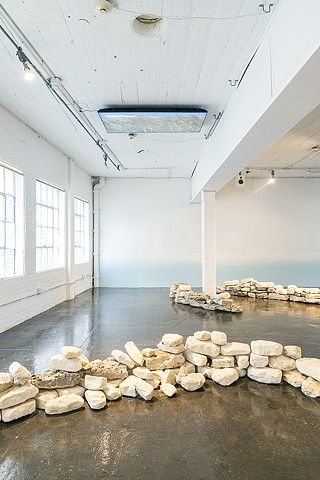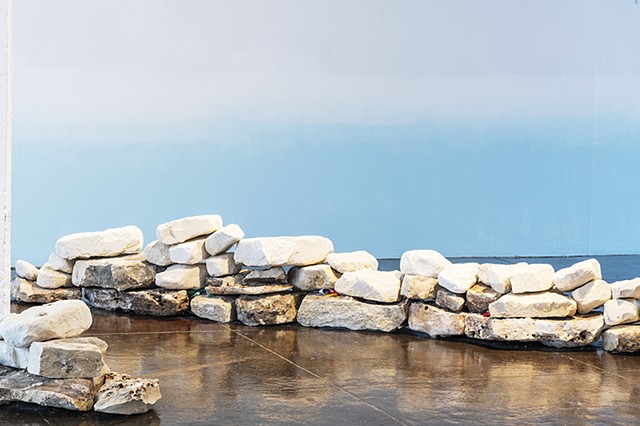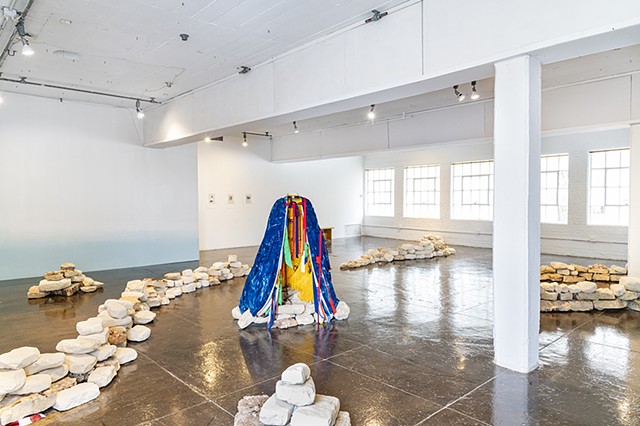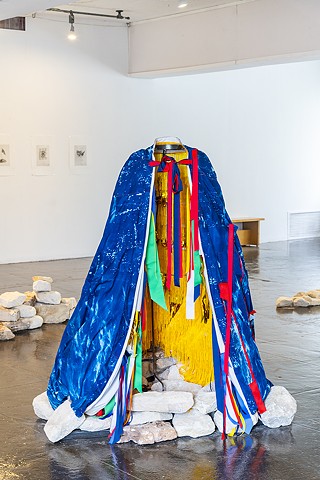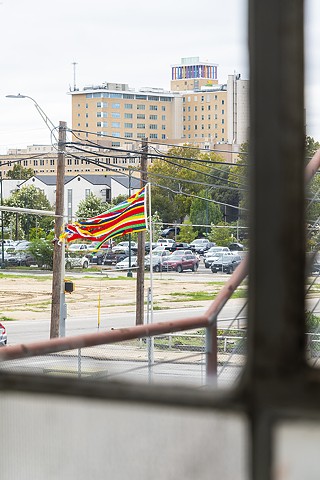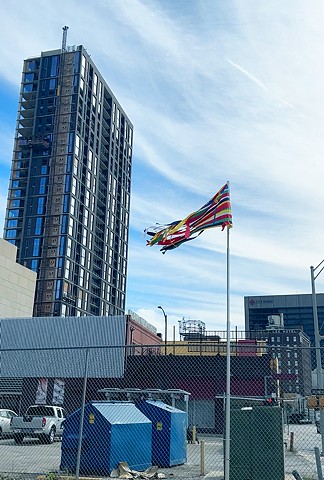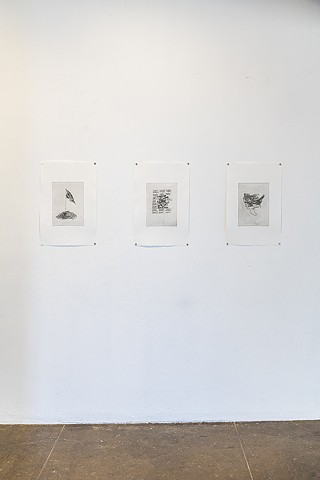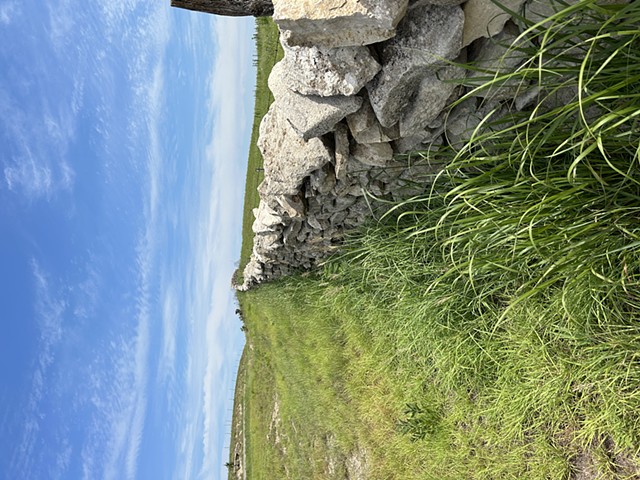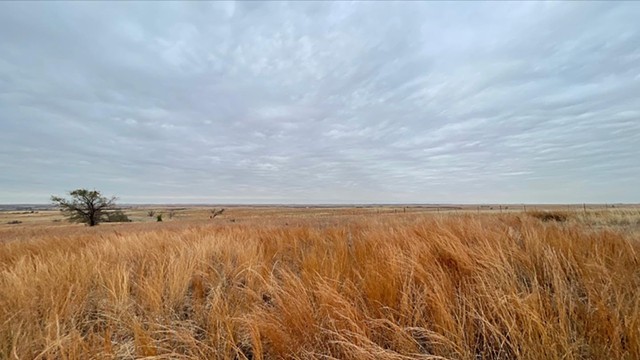this land is my land\ this land is your land
In this multimedia installation, titled this land is my land \ this land is your land, the artist continues to utilize coded language to explore notions of land, place, and the elusive search for belonging.
The deliberate arrangement of stones immediately captures the viewer’s attention. These stones symbolize the artist’s journey from Kansas, where her parents reside, to her current Texas home, following I-35’s path and the rocky protrusions along the way. The rocks signify the deep history of the land, both in relation to the artist’s own family and the native peoples who once inhabited the region and ideas of protection and ownership. For example, before 1867, Kansas’s land remained unmarked and undivided during an era of open grazing. Yet, as new laws were introduced demanding demarcation, landowners used dry stack stones to define their properties. So, the question arises: who decides who owns land, and what methods will we utilize to enforce that ownership?
Nestled in the center of a stack of stones stands a figural-like frame draped in a cape created with a cyanotype exterior and ribbons along the interior, titled After Cōātlīcue. This figure mirrors Columbia, the female representation of America, famously represented in John Gast’s “American Progress,” which depicts the idea of Manifest Destiny and American westward expansion. Additionally, the figure takes inspiration from the Virgin of Guadalupe, who wore a blue mantle of stars as she directed Juan Diego to fill his cape with roses, which, when opened, fell to the floor in her likeness. The cyanotype exterior depicts the Milky Way and references notions of navigation and finding your way, while the interior made of strips of ribbon reminds the artist of pageantry and campaigns. The figure is looking out towards a window, where a constructed flag sits outside. Like the rocks, the cape is neither solely one thing nor another. It is a combination of items with multiple meanings and battling complexities.
The walls feature an ombre of light blue into white, evoking the sensation of strolling through vast grasslands, gazing at the horizon, and experiencing a sense of elevation. A TV monitor attached to the ceiling forces the viewer to look up at a distorted video of moving grass while a sound piece plays throughout the gallery. This audio takes the Homestead Act and the poem “To Live in the Borderlands Means You” by Gloria Anzaldúa and translates both works into morse code. The contrasting tones are accompanied by sounds from the Flint Hills in Kansas and the Chihuahuan desert. This audio lives in a transient space and, along with the other facets of this exhibition, leads us to realize that even through familiarity, there is a lack of understanding. The paint on the walls, the TV on the ceiling, and the flag outside the window force us to move around the space and consider various angles.
Lastly, a group of prints utilizes land ownership language to explore our relationship to land and each other. Words like “motherland” and “homeland” sit in conversation with an American flag in one print, an Aztec god Tlaltecuhtli in another, and a map of the United States in the 1830s in the final print. Robinson invites you to consider the multiplicities of existence. The notion is that individuals can hold many places and cultures at once and are not truly one thing over another but everything we have experienced. Similarly, the land that we inhabit was given to us and taken from others. It has borders, but nature is unbound despite how humanity grapples to bind it.
